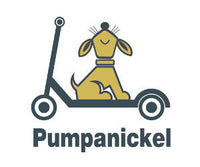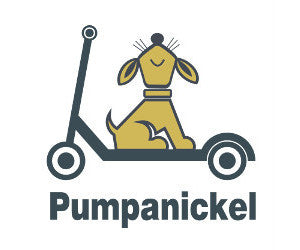
5 Longboard Riding Styles
In our previous blog, we explored the difference between a skateboard and a longboard. Longboard shapes can differ drastically compared to skateboards. To understand why this is so, here’s a guide to the 5 broad styles of longboard riding.
Cruising
Cruising is the most common form of longboarding. Most beginners start with this but experts cruise too! Longboard is a great way to travel and when used as transport, all it requires from riders are simple manoeuvres and navigating some gentle slopes and obstacles. Techniques like carving and pumping are helpful when you cruise.
Carving is used to slow down, turn and pump. It helps you navigate crowds and slow down when you are going down slopes.
Tutorial from Yocaher on pushing and carving
Pumping is another way to cruise besides pushing, and what it means is you alternate between leaning forward on your toes and backward on your heels to continue the momentum of a good push, or pushes. If you're interested to learn more, check out this youtube tutorial on pumping.
What type of longboards should you get if you want to cruise? Virtually any longboard can be used for cruising but some are more suited for commuting than others. Most cruising longboards range in size from 25” to 42” long.
If you plan to use your longboard as mainly transportation for commuting and trips around the neighbourhood and campus, a micro cruiser (25”) or a mini cruiser (27”) longboard will work, especially in congested areas. Its small size makes it great for navigating tight spaces. Since it is small enough to fit in a backpack, it can be put away once you’ve reached your destination. However, these 2 cruisers do require some skills to manage. Read more about micro cruiser and mini cruiser here.
 For those who want to take it up a notch to do long distance, akin to marathons but on longboard, a bigger board that can take bigger wheels will make that long cruise more comfortable and pumping easier. The Pantheon decks ranges from 31” to 37” long and its complete cruiser longboards are set up for long distance. You can check out the Pantheon longboards collection here.
For those who want to take it up a notch to do long distance, akin to marathons but on longboard, a bigger board that can take bigger wheels will make that long cruise more comfortable and pumping easier. The Pantheon decks ranges from 31” to 37” long and its complete cruiser longboards are set up for long distance. You can check out the Pantheon longboards collection here.
Freestyle
Freestyle longboarding is akin to skateboarding, only it’s tricks on a longboard. It involves creativity and technical skills like kickflips, shuvits and more. Whilst freestyle riding is a good way for beginners to learn board control skills, it is also extremely enjoyable for advanced and expert riders.
Freestyle can be done in a skatepark or on the street. Drop down or a drop through boards are usually the longboard of choice for freestyle riders. These boards are wide enough for you to move your feet. And since both are symmetrical, they allow easier flips and tricks as you do not have to turn your board around every time. A freestyle longboard set up usually has at least a kicktail, harder wheels and smaller deck.
Dancing
Longboard dancing is a visual and flowy style that incorporates dancing, tricks and other creative manoeuvres on a moving longboard. Dancers walk, cross-step, perform balance tricks and more, all while keeping the board rolling under them through graceful carving and pumping motion blended into a dance. Dancing longboarding do incorporate tricks from freestyle longboarding so the two styles are close cousins.
Popular you-tuber Hans Wouter dancing & freestyle riding
While you can dance on any kind of board, a larger and wider longboard is great for dancing as it gives you the room you need for your manoeuvres. The right set up in terms of wheels and trucks will also keep you carving fluidly as you dance.
Downhill
Downhill longboarding is the most dangerous and extreme style of longboarding. It is all about speed, drifting, hands sliding and slipping to control your board and speed. This is usually done while in a crouched and tucked position to increase stability and reduce wind-resistance.
Downhill riders can go super fast! To give you an idea, the current Guinness world of record holder for the fastest man on a longboard is Pete Connolly with a staggering top speed of 146 km/hr!! Understandably, this isn’t the best riding style for beginner riders. It is an advanced longboard style that requires serious skills so it’s suitable only for expert longboarders.
Downhill rider on the latest Pantheon Seed
The longboard deck for downhill is stiff for maximum control and stability. It has sharp lips to enable proper cornering and speed, and is usually 70-80mm long by 50-70mm wide. The wheels are soft for maximum grip. Protective equipment such as sliding gloves with pucks, full-face helmets, full pads and suit are necessary for this style.
Freeride
Freeride is similar to downhill but is more trick oriented and technical. Like downhill riders, freeride riders also use sliding gloves with pucks to slide their hands on the road for easy balance. However, they tend to perform more slides, spins and drift without the use of their hands.
So whilst freeride riders are going down hills at some speed, it is not as fast as the downhill riders as they are carving and sliding to control their speed. Sliding is the most common technique in freeride as it helps you to slow down or stop. It involves turning your longboard sideways making your wheels skid so it slows you down. Carving are controlled turns on the road, strung together to slow down the rider and provide opportunities for tricks.

The freeride longboard style is apparently helpful for beginners to learn to balance faster, control speed and get accustomed to the board. It is, however, quite an advanced longboard style so if you want to try this out, do ensure you are properly geared up to protect yourself and minimise any injuries.
Longboard decks for freeriding is medium to stiff with a good concave for locking your feet while sliding. Make sure there’s little flex in the deck as too much flex is not good for freeriding.
Conclusion
Like any other sport, longboarding has different styles which sometimes do require different decks, set up and equipment. This is why there’s such a wide range of longboard sizes and shapes, compared to skateboard.
For more longboard brands and products, visit our sister web shop specialising in longboards - www.thanelife.com.

